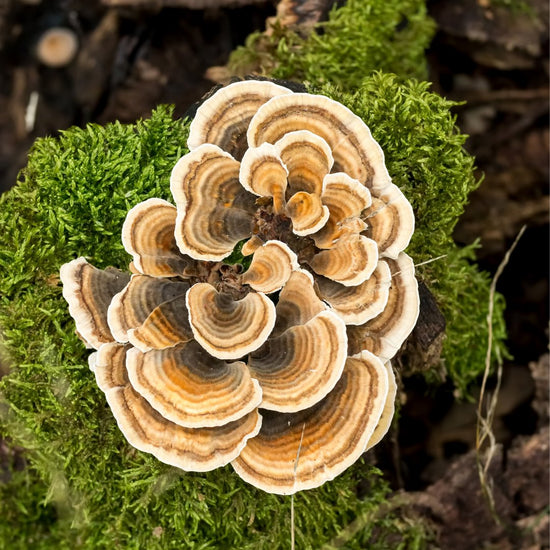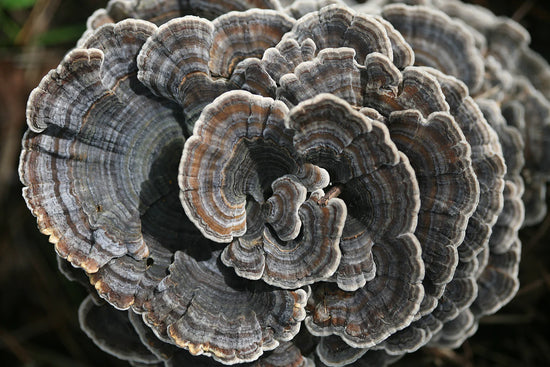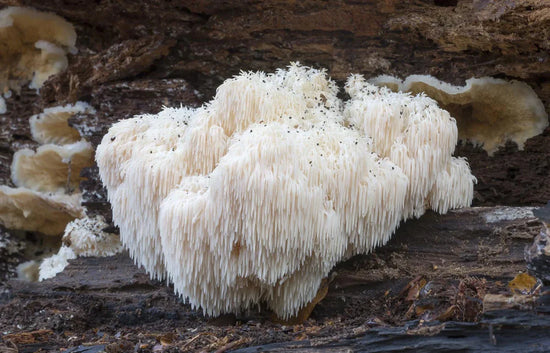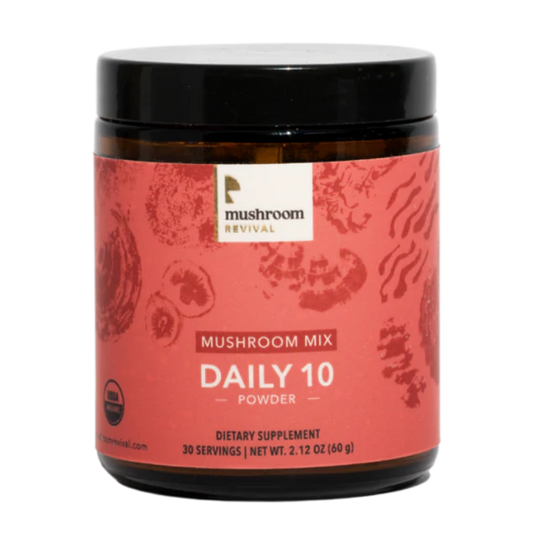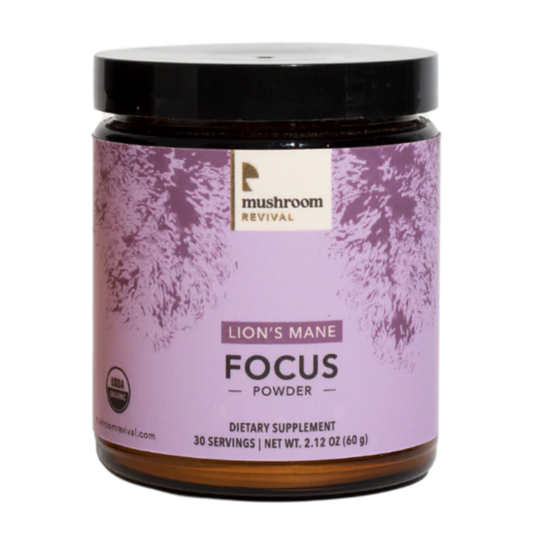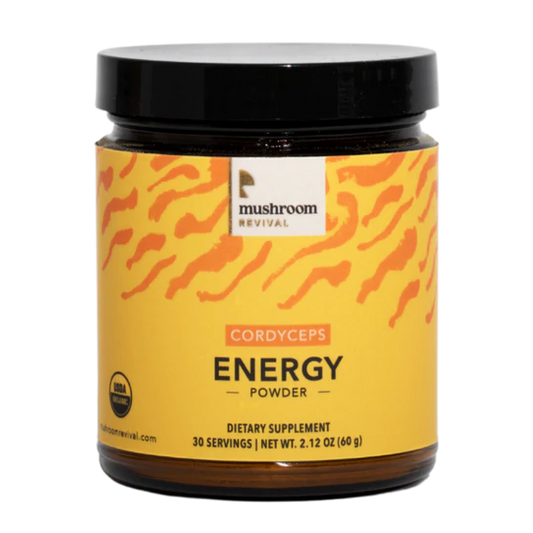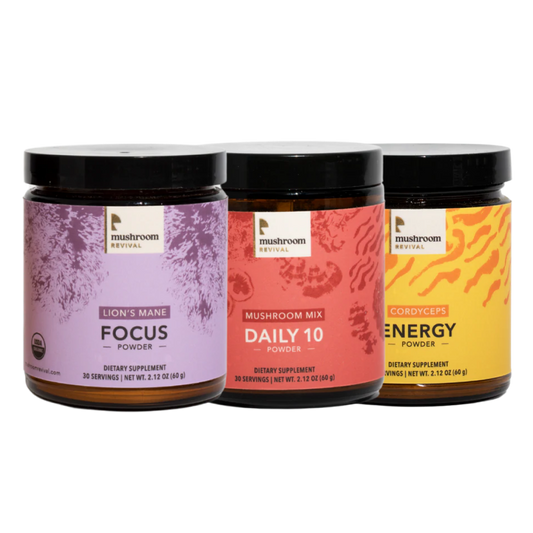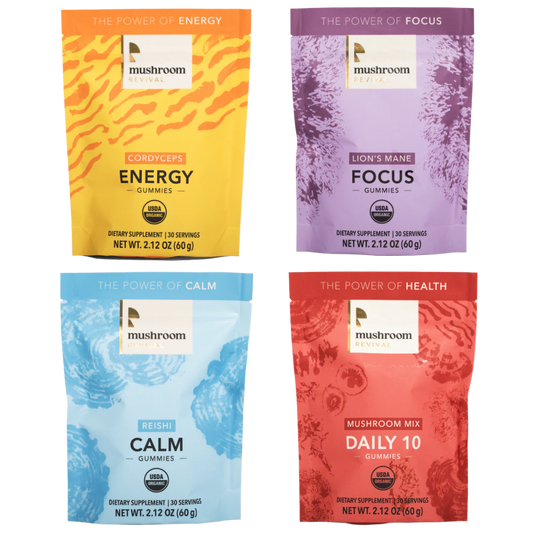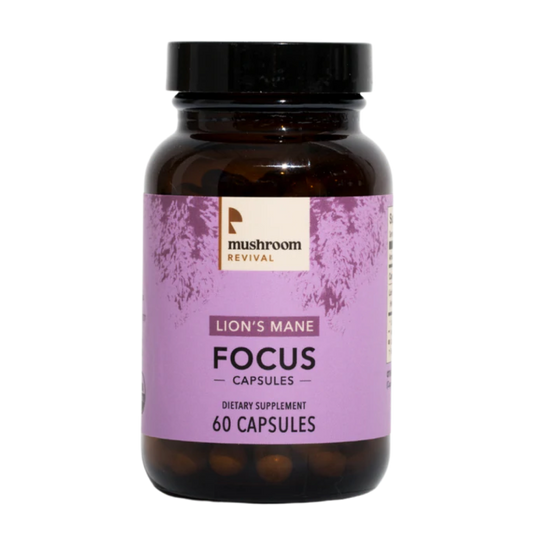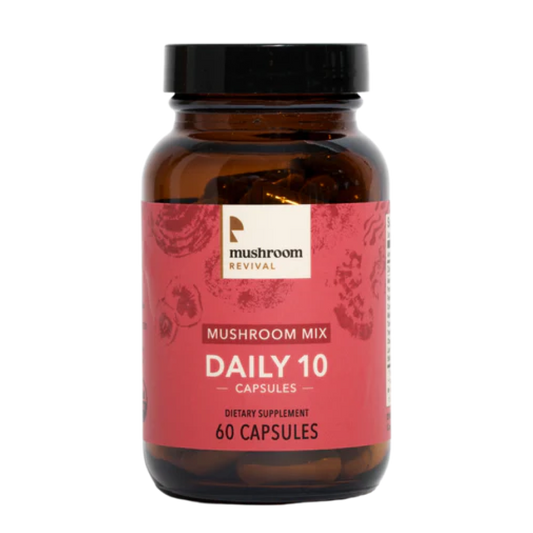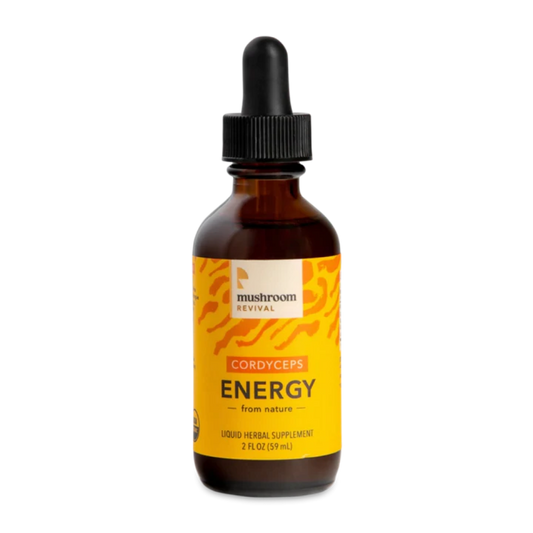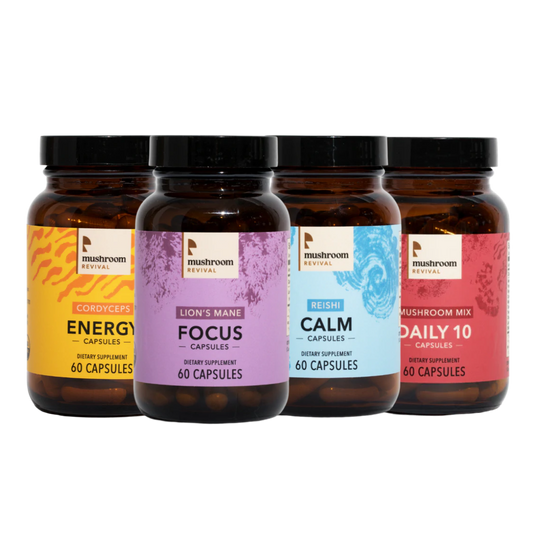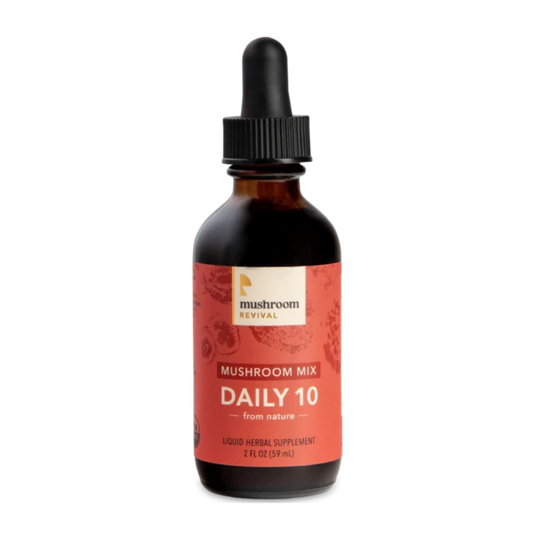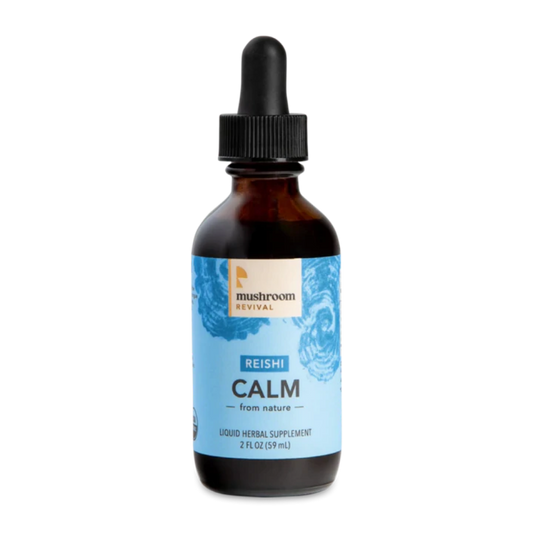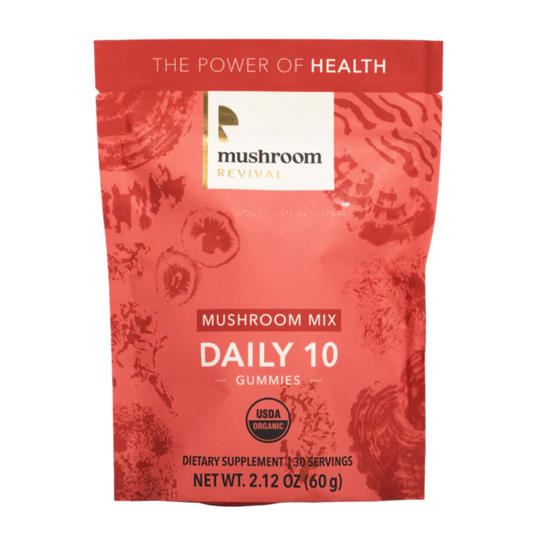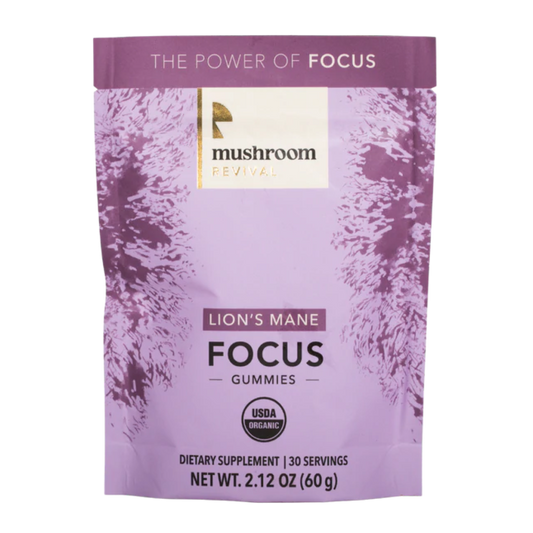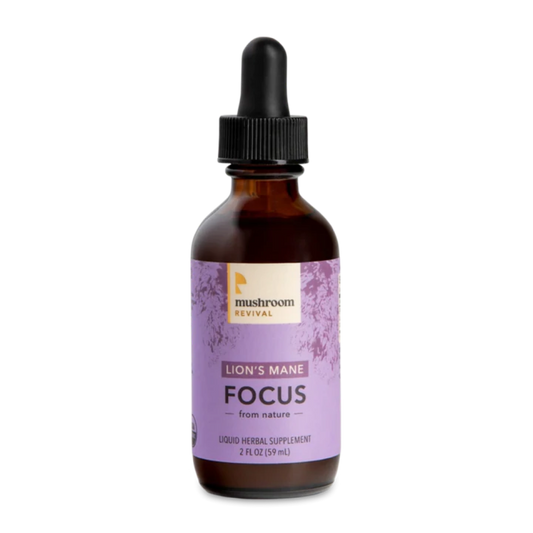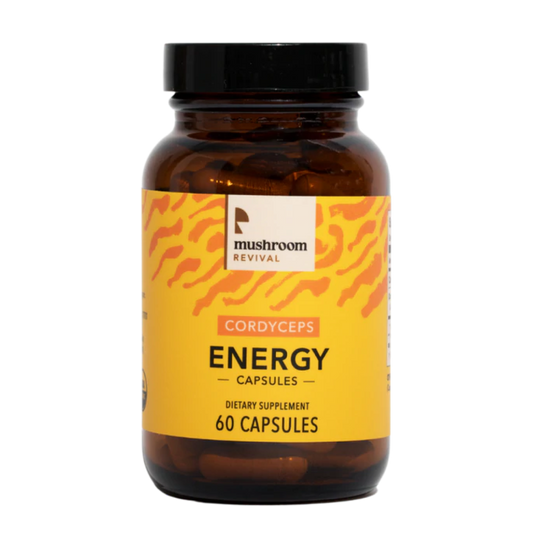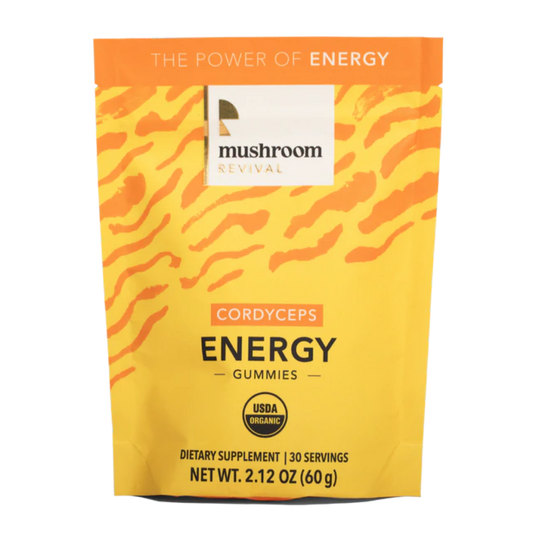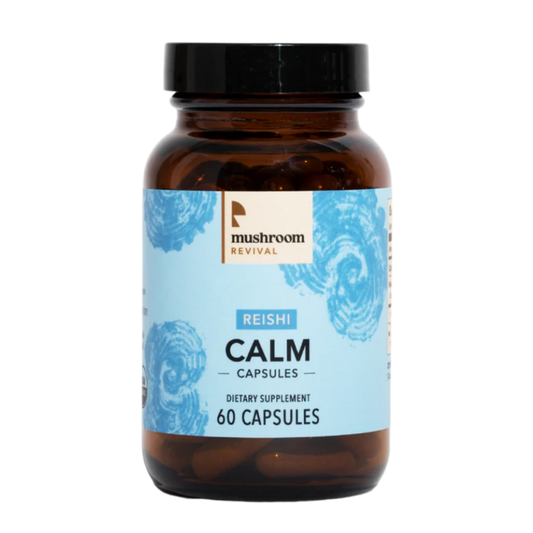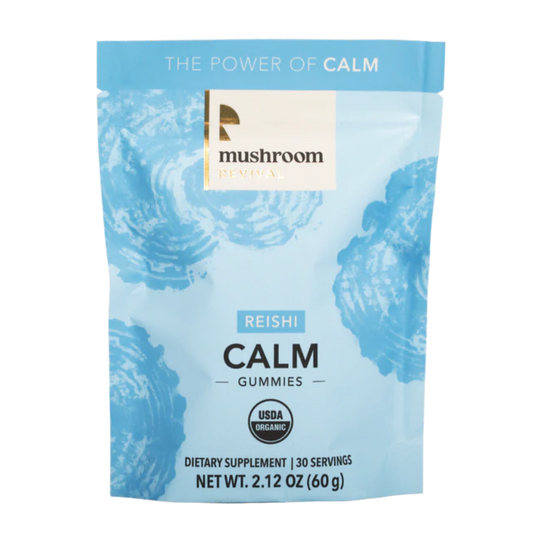Fine Mycelium with Dr. Matt Scullin
Mycelium through the lens of materials science.
Soft and fluffy mycelium isn't as feeble as it seems. Quite the opposite— it's industrial strength. A biotech company from the San Fransisco Bay Area is growing leather from fungi that outperforms animal hides and may be pivotal technology toward a sustainable future.
Today we have the honor of speaking to a leading researcher and CEO of MycoWorks, Dr. Matt Scullin. As a materials engineer, Dr. Scullin takes us on a journey into the mechanics of mycelium to understand its impressive performance. His unique perspective as an engineer inspires new ways to see fungi. We lightly discuss the tricks of the trade, molecular structure, deficiencies in the science, and the importance of collaboration to advance the technology's infancy.
Dr. Scullin is a materials entrepreneur who has pioneered several new materials into commercialization. He is currently CEO at MycoWorks, the leader in the field of fine mycelium materials (Reishiª). He is also the co-founder and board member of a stealth-mode materials company. In 2008, Dr. Scullin founded Alphabet Energy, the leader in the field of thermoelectric products for waste-heat recovery, and sold that company in 2019. Prior to founding Alphabet Energy Inc., Dr. Scullin held positions at X/Seed Capital, IBM, and General Motors. He has won numerous awards for innovation and entrepreneurship including the World Economic Forum Technology Pioneer award and was named to Forbes 30 Under 30.
Show notes:
Made with Reishi: www.madewithreishi.com
MycoWorks: https://www.mycoworks.com/
TRANSCRIPT
What's going on mushroom family. Welcome back to another episode of mushroom revival podcast. This is a podcast dedicated to bridging the gap between you our lovely, amazing beautiful listeners and the wacky world of mushrooms and fungi. So we interview experts from all around the world to geek out about mushrooms and fungi. And we're super, super excited to have an amazing guests coming on our show today.
Lera 0:51
Yes, a long overdue guest. Everyone. Please welcome Dr. Matt Scullin, who is the CEO of MycoWorks med school and is a materials entrepreneur who has pioneered several new materials into commercialization. He is also the leader in the field of Fine Mycelium materials. He is also the co-founder and board member for a stealth mode materials company in 2008, Dr. Scullin and founded alphabet energy, the leader in the field of thermo electric products for waste heat recovery, and sold that company in 2019. Prior to founding alphabet energy Incorporated, Dr. Scullin and held positions at X Speed Capital, IBM and General Motors, he has won numerous awards for innovation and entrepreneurship, including the World Economic Forum technology Pioneer Award and was named to Forbes 30, under 30. So you've been very busy, and we're super excited that you fit us into your schedule. And I was hoping you could start off by telling us how you found micro works or how they found you.
Matt 1:55
Yeah, well, thank you. It's a pleasure to join you both. So I found myco works pretty randomly, through mutual friends in San Francisco, actually out at a concert one evening, and I met somebody who knew Sophia Wang and Phil Ross, the cofounders of MycoWorks. And he said, Hey, they are looking for some help. Sounds like your background could be useful to them, you should try to get in touch. And honestly, I slept on it for many months, I did not get in touch until finally, a couple other friends had said hey, you know, this is this is the real deal. myco work. So Phil and Sophia are really onto something interesting, you should definitely check it out. So I finally went over and met them and was just immediately in awe of the materials that they had put together, they were really remarkable. And having seen some other bio materials MycoWorks really, you know, was clearly on to something special with the way that the the material that they had made thus far performed, and so began helping them out pretty much right away and join them as CEO shortly after the rest is history.
Alex 3:21
Cool. Could you give a little brief history of not only the company, but how this company fits in the realm of myco materials and then also biomaterials. You know, what is what is the bigger timeline of when did biomaterials come on? on the scene that myco materials then myco works. And I saw Reishi is a new company that that is or maybe a product that that is coming out? When was the focus to myco-leather?
Matt 3:55
Sure. So so you know, MycoWorks has a long and rich history and actually a really interesting history a unique one for a startup or a biotech or biomaterials company. MycoWorks really began as a product of the art practice that Phil Ross had been working on for many, many years. And it really came into fruition as a company with the help of his co founder, Sophia Wang. And so Phil's long history of working with fungi as a material after he was working on it as a food was sort of married with with Sofia's perspective and ability to synthesize some of the ideas that Phil had into a project to take these materials into into the world. So, you know I think it's it's really unique that MycoWorks is a company that was born out of culture and out of an artistic practice as much as it was born out of an interest in science and technology and changing the world through all of these things. So it was really a story that resonated with me when I met them, you know, I thought it was quite compelling that myco works, had a had its roots in Phil and Sophia wanting to bring something beautiful to the world wanting to bring something truly new as a craft, and as a way of making materials as much as they wanted to bring the actual material itself to the world. That makes sense. So the thing that I think was really remarkable about what myco works had done early on, and what Phil had sort of figured out how to do through his practice was material science, right? They were, they were manipulating fungi. To this day, we manipulate fungi as it's being grown in order to create new structures within the material that give it interesting properties such as high strength for a leather or softness or supplements for for a leather. And conversely, Phil and MycoWorks had figured out how to make different types of materials, whether they were foams or bricks or many of the different sorts of myco materials that are that are talked about generally in the field. So Phil, you know, very influential person in the space, you know, was one of the the seminal people in this field of biomaterials, I think has, you know, been responsible for inspiring many of the projects, not only in myco materials, but in biomaterials generally that are out there. Because, you know, for many decades he has been using fungi as a structural material in sculpture or otherwise. So you know, we're myco works fits into the field of biomaterials, there's a few ways to answer that question. One myco works is a very influential Trailblazer in this field, having shown long ago that it was possible to take biomaterials and turn them into something, you know, far outside the realm of biology such as a structural material. Today, biomaterials encompass a lot of really different interesting areas, whether it is the fermentation of certain materials, or the use of of stem cells to create or try to replicate what nature is making for instance, with with animal skins, various mycology projects to make different types of materials, or spider silks and the other sort of, you know, protein synthesis companies that are out there. So there's really a lot going on in biomaterials right now. It's a really fascinating time for the field. And I think what sets myco works apart is the company's ability to to take material science, and put that first using biology as a tool to arrive at really interesting materials. When myco Berg started off, you know, Phil Ross was doing stuff with the bricks and really playing with the architecture. I feel like that was his beginning playgrounds working with the fungi. But then now there seem to be hyper focused on this leather product, which is truly unprecedented. No other like biomaterial company is doing anything like it. And before we get into the science of that, I was wondering, like, if you could tell us more about why they chose to focus on myco leather and why this would be important for the current leather industry? That's a great question, you know, my job at myco works is primarily to try to make good decisions for the business of the company, and to think long term about the arc of the different products that we want to take to market. So, you know, having taken multiple materials to market before in my career, there's one challenge that I think materials companies always have to overcome, which is this challenge of the cost curve, right? It's always expensive to make material in small batches, low volumes, but you have to in the early days, of course, and you have to scale up in a way that is you know, let's say not not too jumpy, right, you have this quote unquote Crossing the Chasm problem in startups where as you scale up, you might reach a point where you have to get to absolutely enormous volume in order for the cost to come down and for the product to actually make it into the market. And I think some products that are derived from biomaterials, like mycelium life, the building materials like the bricks have that issue, right. These bricks are competing with materials like styrofoam packaging for boxes, shipping, and the problem there is that those materials in the market are very, very cheap, right? They're commodities. They are produced at absolutely massive scale. So to make those myco materials cheaply, you know, that the company doing so would have to be a massive scale. So the problem that you have to solve for a startup, particularly a material startup is how do you get from here to there. And leather is an interesting product, because it is really high value. And so even at low volumes, it can be a product that's sold for for, you know, a good deal of money. And it's a product that can be sold relatively profitably compared to other other myco materials. So it's a really big market. It's a really interesting one, because, you know, we're directly competing, if you will, with plastics and with animal products, and we view it in the long run as a stepping stone to many other materials that we think will also be economical when we've achieved the sort of scale that we need to achieve, which we can do with with Reishi our leather like product, totally, I feel like to start off, it'll be like this rare artisanal products almost, but eventually is the hope to be competitive with normal animal leather. Yeah, totally. You know, we view Reishi as a complimentary product, it is it's a natural material. And so, you know, the same way that the Earth has given us different animals, different skins and you know, we have figured out through technology, mostly chemistry, how to turn those skins into, you know, beautiful, supple materials, which of course also have some negative aspects to them. Nature has also given us this really interesting strong material in mycelium and myco works, we figured out through a combination of biology, fermentation, and chemistry, how to make that mycelium very strong, and also supple, soft and durable, the way that leather is. So, you know, it's really another option. And like you said, you know, initially it's, it's going to be of course, lower volume it is today, while we're still scaling up, but we're scaling up as fast as we can. And we do see huge demand for this, it's really heartening to see that the fashion and luxury industries really want what we're doing. there's a there's a huge need in the market for materials that are neither animal nor plastic, natural materials that aren't loaded with a polyurethane, which has been the problem with a lot of the you know, quote, unquote, vegan leathers that are out there. So I think mycelium is going to play a really big role in in the fashion and luxury industries. And then, you know, can play a role beyond that, as we scale up.
Lera 12:38
I feel like the r&d has been interesting for you. I remember seeing on your Instagram your field trip to this leather tanning factory. And it was it was honestly like kind of alarming to see this on the scale that it is like almost had this kind of slaughterhouse feel to it, but it was just all animal hide.
Matt 12:55
Yeah, totally. I mean, you know, leather tanning is an ancient craft. It's a very interesting field from a chemistry point of view. I mean, scientifically, you know, leather tanning is is very advanced chemistry. But, you know, literally the gory details of it are not things that most of us want to experience. And you know, one of the advantages that mycelium has is that it doesn't use nearly the amount and it doesn't use any of the really nasty chemistry that are used in animal leather production. And that's because animal leathers are comprised mostly of collagen right? collagen is what's in our skin. And collagen has these amino groups on them. And so certainly chemistry is particularly metals like Chrome helped to react with those amino groups and collagen and crosslink them make them stronger. But in mycelium, you have a lot of hydroxyl groups that are on say the molecules of Titan, which are which are in mycelium. So mycelium is full of these really interesting molecules, these interesting compounds, but it's a little bit short on amino groups. So you really treat it with a very different chemistry and that chemistry happens to be, you know, much greener, much safer, and doesn't require all the nastiness that animal tanning tends to require doesn't always require all that but tends to require. So it's been very interesting digging into the leather tanning industry. And you know, it's an industry that we work with closely. It's an industry that wants to embrace new materials. We've had a really enthusiastic response from the leather tanning world from tanneries to our material. And I think that's that's fundamentally because Reishi is performing well. You know, we've gotten to a point where we get the respect of the leather tanners and so they're eager to add Reishi to their repertoire of materials they can offer to their customers in fashion luxury.
Lera 14:55
That's such good news that it's such an auspicious endeavor, even in these early stages.
Alex 15:00
Is Is there anything you know? close? I know there is fo leather that's polyvinyl chloride. I know I've heard other people making clothes that have like pineapple by products and you know obviously have been, there's so many other plant base materials. Is there anything that comes close to Ganoderma mycelium and yeah, so why why mycelium? You know what makes it so special? Is it the antimicrobial compounds? Is it the actual nano structure? Why is it performing so well?
Matt 15:36
Yeah, good question. So, why mycelium? I mean, I would actually ask the question a little bit differently. I'd say why Reishi right. Why Fine Mycelium? Which is what we call the structure of the mycelium that we grow. So mycelium on its own, you know, mycelium that you might find in nature or through sort of a traditional quote unquote mushroom leather process that which is typically done in an incubator, where you grow a foam of mycelium gives a very rarefied structure, the cells are not very dense, they're not intertwined. And nonetheless, you get a material that's pretty durable, right? for anyone who's ever felt mycelium or sort of a preserved or large dried mushroom, right? It's a, it's a tough material, it's a material that can withstand a lot of mechanical strain, or stress, I should say, and it is on its own. To begin with a an interesting starting point for any material that requires mechanical durability that myco works, we kind of take it a big step further. So with Reishi, we have this process that we call find mycelium where we do some tricks can't go into all the details on it. But we do some tricks in the fermentation and with basically some some key steps during the growth that cause the cells to intertwine more and to grow into this really strong structure. So that gives it the strength and durability that matches cowhide leather. And so we're really proud to have published the third party data on our website, which is made with reishi.com, where you can just going and download these reports that show that the performance is like cowhide leather, which is really remarkable. We're super proud of that. So I think, you know what, what sets us apart there is this focus that we've had on the material science of, of Reishi and of, of Ganoderma. That has led us to this find mycelium process. And what I mean by the material science is how the structure of the material affects its properties, which is really the core of of what material science is all about. And well, biology is really important. And we do a lot of biology, of course, we do a lot of mycology. And I think we're still really on the ground floor with respect to exploring those two things are two super exciting areas of r&d for us. But where I think we're we're far ahead of others isn't thinking about this cellular structure and how it really ultimately affects how the material feels, how it performs, and how durable it is. So that's what I would say is sort of the key differentiator about Reishi. So have you ever tried working with other species and have any come close to being a contender to Reishi? You know, early on, I do believe that Phil experimented with a few different species and a few different strains. One reason why he chose Ganoderma is because it's a very safe strain, you know, has a very long and rich history, particularly in Eastern medicine as something that's been used as a as a healing mushroom, right. And it's, of course, popular today, as one as well. So that was really important. You know, I think Phil had the prescients to think about all right, if this was going to be produced at an industrial scale, needs to be very, very safe. And then I think Furthermore, it produces this very tough mycelium. And that was of course key criteria. Another interesting advantage is its color, you know, the fact that Ganoderma is so light helps in some subtle but important ways during the growth for us to sort of monitor it and understand from an industrial production point of view, kind of where we're at in the process. So I would say you know, it's a, it's a strain that checks a lot of boxes. That being said, you know, we're very actively looking at other strains, you know, some adjacent ones that could be interesting, and some ones that could be, you know, a little bit more out of left field that could yield some interesting properties. So, you know, again, I think, remarkably, despite the progress we've had, we're really on the ground floor with respect to all the biology and the mycology associated with, with these materials in general. So I made the very conscious decision to leave the field of semiconductors and energy materials, you know, kind of the areas that were driving material science for so many decades, still very interesting areas. But it's so exciting to me how in biology, we're now able to make materials that are performing, like the materials that we know, but we still only understand a tiny fraction of what we do, about, you know, quote, unquote, inorganic or solid state materials. So this is this is I think, you know, a huge opportunity and myco works, you know, hopefully, is going to be able to commercialize an enormous number of materials over time. That's, that's our intention.
Alex 21:02
And we'll see if you can answer this question, but I'm sure a lot of our listeners are curious, you know, about your process, and what does it actually look like? You know, I'm sure many of our listeners have never seen anything like what you're doing, let alone a mushroom farm. And you talked about fermentation? Are you you know, please disclose what you can but is it a liquid fermentation like a bioreactor? Or I don't know what you can say in terms of your process to paint a, you know, an introductory picture to our listeners? Yeah. So we tried to emulate what mycelium experiences in nature driven in the forest.
Matt 21:46
So it's all solid state, you know, we're using waste biomass. So waste products, such as sawdust to grow the mycelium. And we're doing this in trays. And the trade is what mostly, let's say, the key to our process, right, we've got a lot of proprietary things about our tray. And that leads to a very proprietary structure of the material, and a set of very proprietary fermentation conditions as well. So it's technically solid state fermentation. And, you know, that's most akin to traditional mushroom farming, or, you know, maybe a process like, like the Koji process. So, there are industrial precedents for what we're doing. But we do it in a way that gives a little bit more control over the actual mycelium growth. You know, in mushroom farming, you're really optimizing for the mushrooms, right? You don't really care that some mushrooms are a little bit smaller or more twisted or lopsided or whatever, right? You're not optimizing for the aesthetic qualities. What's interesting about what mycoworkers is doing is that we are right that's what we care about. We're trying to grow very strong, smooth, perfect, beautiful mycelium. And so we've had to invent a lot of tricks, a lot of technology to be able to do that. So for us, you know, the key is growing these really nice sheets of mycelium and to actually avoid any mushrooms from growing and so we're growing the mycelium and then taking that mycelium in sheet form and doing some chemistry on it to turn it into the final product which is Reishi using our our fine mycelium technology, as we call it.
Alex 23:36
You know, it's funny when you talked about crafting this mycelium to to basically do your bidding, and talking about how traditional mushroom growing you know, is less concerned about that aspect. I immediately thought of Reishi bonsai and I have you know a couple of friends doing Reishi bonzai of the actual fruits of Reishi and really taking environmental controls whether co2 or light to craft these really beautiful structures like someone would do with a bonsai tree. And it's really interesting that you're doing that with the mycelium. And I had this question of is Reishi does Reishi like to be bonzai? So to speak.
Matt 24:34
Yeah, look, I mean, I think that it you're spot on with the approach that Mike works was really to maybe use another pun here another now it was really rooted in Right. I mean, bonsai was always an inspiration for Phil as he articulates, you know, the different sort of process or visual motivators that he had in starting myco works and so you know, absolutely our whole ethos is around controlling the environment. And, you know, as Phil describes it to him Reishi Ganoderma is plastic. And if you give it the right conditions, it will do what you want. So we are taking a culture from outside the field of mycology around process control and linking that with this ancient practice. And with Phil's more modern practice to create something that is very unique, which is what allows us to have this very unique material and these new unique properties. So we're actually in a lot of cases, trying to unlearn some of the mycology right that is out there. Because a lot of the mycology that's out there. While it's fascinating and has worked for certain purposes for for such a long time. I mean, if you go and read the literature, some literature will tell you that mycelium goes better under high co2, some will tell you what goes better under low co2, right? So there's not a whole lot of true scientific work that's been done particularly on mycelium growth. And as a result, you know, we've had to kind of relearn this practice and invent Furthermore, this practice of making this material, and it's, it's fascinating, right? I mean, it's just totally fascinating what fungi do, it's fascinating to know, your point about whether they'd like to be bonds, I'd it's, it's fascinating that yes, they can be and if you change the properties, that they're surrounded by even just a little bit with respect to gas concentration, or temperature, they will really change their behavior very significantly. So it's really critical to us to have really, really tight process control, and to have a really, you know, stringent culture of production. So it's been interesting bringing those worlds together, they're, they're very different worlds, right? You don't typically think of the the high performance, you know, really tightly controlled quality, quality control quality assurance culture, that you typically find at a factory, you don't typically associate that with the world of mycology and mushrooms. But it's, it's interesting. And I think overall, we're learning lots of things that hopefully can push the field forward in general.
Alex 27:19
Yeah, and your your myco terraform. Forming pretty much right. Yeah, exactly. Yeah, it kind of, you know, it's a small petri plate kind of experiment of, of what will happen to humans, when we change your environment? You know, the Earth is our craze that we're all growing for sure, exactly. So you you have in your bio, that you you worked on a stealth mode materials company, which sounds super James Bond, super awesome. You know, obviously, it's, it's in the name that you're not really allowed to, to tell us anything about it. But what is a stealth mode company? And what what's the intention behind going stealth mode?
Matt 28:05
Well, I think the stealth mode company sounds more exotic than it is in a lot of cases. I mean, this is a very interesting company. I'm involved on the board of that company. But basically, it's a company that sort of early stage, and not quite ready to talk about what it's doing yet. And typically, there are a couple different flavors of stealth mode companies, one might be, you know, they're sort of just experimenting, trying to figure out what the product is going to be, and aren't ready to talk about it yet. Others, which I think is more This one is that, you know, sort of just building up a bit more momentum, no need to talk about it yet. It's a bit of a competitive market. And so when a company's really in a good place, with respect to its go to market strategy, then it'll it'll reveal itself. So So yeah, you know, I love working on new materials, and one of my passions is to try to figure out how to take brand new materials to market because materials are really the basis for many of the huge Why should say materials are really the basis for a lot of what happens not only in the economy, but in society as a whole. You know, we we sort of measure our era's through human history by the primary material that was used from the Stone Age, the Iron Age, Bronze Age, steel age, right. And, you know, we're sort of still living in the, in the silicon age, the semiconductor age, and I think the future is going to be about biomaterials. I think we're approaching this age of biomaterials, if you will. And again, I think we're really just, you know, with biology, I think where we're at with biology is where we were with physics like 100 years ago. I think there are so many interesting things we're going to be able to do with with biomaterials.
Lera 29:54
Yeah, it's really, really exciting and it's a must I know, like the amount waste that we produce. I think the average American produces like four and a half pounds of waste a day. That's ridiculous. And like we can make things the materials in our world don't have to be waste, they can be discarded. But that doesn't mean that they need to end up in a landfill and, you know, never seen again.
Matt 30:21
I think I think with with myco materials, and with biomaterials, in general, you know, I think it's that they are a big step closer to this holy grail of having a circular economy, where the materials that we fabricate our things with can end up going back into into the earth by being biodegradable, or by being recycled in better ways. So, yeah, I think that biomaterials might help to solve a big piece of that a big piece of that puzzle and getting to a more circular economy.
Lera 30:53
And would require less initial investment. So you know, with Reishi, we don't have to mine anything. It's more, you can grow it on agricultural byproducts and not have to grow a whole animal. So yeah, it's, it's a very beautiful thing. And as a material scientist, have you worked with bio materials before and just with, with your background with these non living organisms, or nonliving, substrates or structures in general, like what impresses you most about Reishi?
Matt 31:24
Yeah, well, I had not worked on biological systems before, I was really interested in working in biological systems, because they're just so fascinating. And they offer so many new degrees of freedom, compared to what you have within inorganic material. And the thing that has surprised me the most about working with Reishi, is that it really does stay consistent. It does what you want it to do, if you keep the process conditions, really well tuned. And this is not something you tend to think a biological system will do. But, and I think many do not, of course, right. But what's interesting about fungi, and in particular Ganoderma, is that its growth rate is sort of just right, you know, it doesn't grow so fast, that you're getting all of these crazy mutations every time, you know, like, like when you think of, you know, the vast number of genetic experiments that you can do with a roomful of fruit flies and a lab, right, our growth rate is really slow. So it's not like we're, we're going through lots of fruit flies. And, and, and I shouldn't say actually, that I never worked biological systems, because that reminds me, I did do an internship in I think High School, looking at at DNA code at a lab at NYU, with a roomful of fruit flies. So did experience it did experience that once before, but you know, Ganoderma, fungi, they grow slow enough, where you can tune the properties through the environmental conditions, through the substrate through the temperature, you know, the interactions that are had with it. And by getting all of that just right, the organism is pretty stable. So that's been a pleasant surprise. You know, of course, every once in a while, a tray will sort of do its own thing. But sometimes we observe really fascinating things that allow us to then go in a new r&d direction. So conversely, we can also induce the organism to do really fascinating things. So that's the stuff that I would say is, I think most exciting is that, well, the organism is stable, it also has a lot of versatility, that we are just starting to tap into. And we've got a really great group of scientists from around the world, who are now collaborating with, to try to do just that, understand the genetics of our material bit better, sort of push the boundaries, on on the technology around that. And just generally come up with really crazy ways to turn our strain that we're using into sort of a super strain, if you will, for for these leather like applications.
Lera 34:22
And I don't know if you can talk about this. But how does that work? Do you work from like generations, and you take spores of the fungi that you were just working with to hopefully perform even better in the earlier conditions? Or do you just work with one culture and that's your old faithful.
Matt 34:37
I can say a couple things about that. I mean, I might be surprised that some of the traditional mycology methods that we use that can be effective and you know, sort of arriving at the right strain for the job. But at the same time, we're also doing some pretty advanced biology to try to leapfrog some of that. Let's just say there are some really exciting things in store in in the long run. And I think that tuning the biology of this organism is really going to be where we're able to unlock all kinds of new types of performance, that you just can't with a natural material that is not fungus, right? That is, that is an animal, for instance, where you just don't have that sort of control. So that is a suit super exciting to me. And the marriage of that, that biology with with material science is I think, going to be the key because biology is just one aspect, right? And there are frankly, there, there are a lot of companies working on biological ways to arrive at a new molecule. But a molecule is not a material, you know, you have to have that material science element of how do you manipulate that thing as it's grown, in order to give it the right structure. So you know, the analogy I like to give there is carbon. So carbon is sort of a classic allotrope, as it's called, right in material science, where pure carbon can either be graphite, which is what's in your pencil, right? These these sheets of carbon that just slide from, you know, the pencil lead right onto the paper, or pure carbon can also be diamond, this super hard, transparent material that cuts through anything, and certainly doesn't, you know, write on a piece of paper. So how can pure carbon be both of those things? It achieves those two different properties by having two different crystal structures, two different structures in which the atoms of carbon arrange themselves. And so that's also the key to biomaterials is how do you take these really interesting molecules that are in biomaterials, like collagen and skin, or cotton in mycelium, and give them structures that give them new properties. So that's where we need to draw on what's already known in material science, but also where we can draw, again, from biology, because sometimes biology gives us interesting structures that we have a hard time replicating in, in the lab. So that intersection there is, I think, going to lead to too many new materials over time. Oh, definitely. And if you would look at your material under a microscope, how would it compare to, you know, just a normal mat of Reishi, like a Reishi block from a Reishi farm? Yeah, our material would be a little bit more dense, and its cells would be a little more interwoven. So that's kind of the key to the strength and durability we've been able to achieve. So you know, what those tests online on our website I was referring to earlier, what they, what they show is that our material has a much higher tensile strength. So that's the strength that a material has when you pull on it, which is really important for say, fabricating a shoe, when you have to do what's called the blasting process where you pull on the leather and wrap it around the last or the mold for the shoe. It's really important for fabricating all kinds of other other garments and bags and things like that as well. And our material has really good durability. And so which you know, means how does it perform in the long run under things like abrasion or folding, or other sorts of cycles that help you characterize the way that leather performs in the real world. So the structure that we're able to get that more intertwined cellular structure, which we call find mycelium is what leads to that strength and durability that we have that really sort of sets us apart.
Alex 38:45
So we were talking about genetics before. And I'm just curious, because, you know, in my very limited research in things like entomopathogenic, fungi for novel, bio insecticides, genetic engineering is just, you know, it's straightforward industry, it's like, you gotta do genetic engineering, if you're going to make a new bio insecticide. And same with micro remediation, industrial applications for enzyme production, just like you got to make a new strain, you have to do genetic engineering. Is that the same with the myco materials? industry? Is it? Is it still maybe not at that level yet? Or is it is it being played with?
Matt 39:31
I would say that it's being played with I would say that we're we're not at the level yet, where genetic engineering is a requirement in order to get good property, you know, we've been able to get great properties, mostly through the engineering of the fermentation system. So that being said, I think that there are a lot of interesting directions that genetic engineering to take us in so I was referring to sort of being on the ground floor with respect to biology. I think that's because, there really haven't been a whole lot of genetic engineering studies as they relate to mycelium as a material. You know, I can think of one off the top of my head that I believe was a nature paper, maybe science from a couple years ago, where a group showed that they got I believe, 100 fold increase in the density of mycelium, by doing a simple gene deletion, right? So maybe that's the very basics of genetic engineering, if you'd even call it that. But it's the first scientific study I had seen of someone specifically trying to alter the mechanical properties of a fungus with with the genetics. So that's really fascinating to me, that to me, it's going to open up a lot of doors and the the idea of, of a material being genetically modified, you know, GMO is, is less troublesome to me, I guess, when it's not something that you're ingesting. I mean, I don't want to open up a can of worms here. I don't feel super strongly, either way, to be honest, on that subject. But uh, you know, I think that, like you pointed out, genetic engineering is sort of the backbone of a lot of the biotechnology that we all use and need and, and love. And I think that it's going to offer really, really interesting avenues for for mycology as well.
Alex 41:16
Oh, totally. And, and it is a buzzword, and I'm grateful that you brought that up, because a lot of people hear GMO and they're like, Ah, you know, their whole world crashes. And it's like, if you're using it to clean up toxic waste in the environment or an alternative to the cattle industry. Hallelujah, like, great. You know, I mean, like, that's awesome. Go for it. Yeah.
Lera 41:39
Genes mutate all the time, even naturally.
Matt 41:42
So yeah, absolutely.
Lera 41:45
So I wanted to bring up this time, I took a class here and Western Mass where we were making like the mushroom composites and just growing them off of hemp. And we tried to do this one giant block of substrate that I had sterilized for everybody. But it got a little contaminated after a week. And one of the students was like, I was like, Oh, no, and they were like, wait, Isn't this what you want? You don't you want this trichoderma to just take over everything. And it just made me think that's such a good point. Reishi is obviously stronger, and at works more like a glue. And you did talk about this a little bit? Can we zoom down and look at each filaments from something like a random mold and Reishi? And why? Why does Reishi win here? When it comes to making a more durable structure? like can you explain that a little bit more in detail.
Matt 42:33
Cleanliness, with respect to the strain, right. So having that strain thrive in a sterile environment is really important because as you put it, you know, you want the Reishi to win, you want it to take over its food and put its energy into growing itself and not fighting other things. Same way, when we're sick, we have to slow down as an organism. You know, same same thing with with fungi. So in our production process, cleanliness is really important. We borrow a lot from the techniques that are used in mushroom farming, but also from some other industrial practices around you know, food and and other pharmaceuticals, other areas that need cleanliness and aseptic practices to make our process work really well. And going forward there, I think are really interesting things that we can do biologically, to sort of give the mycelium a boost in, in doing that themselves. And I think I think we're, you know, early on with respect to that. But it is a very strong organism that that likes to win, as all organisms do. But Reishi Reishi is, is good at winning. So it's one that allows us to grow this material at a really high yield, which is important when you're commercializing it.
Alex 43:49
So I saw a TED talk about kombucha scobys being used as a clothes. And I was giving a talk. I don't know if you've seen it, but she was Oh, yeah. Eat right now or this will fall off. You know, it'll just melt. Yeah, yeah. And I was just curious, you know, you're making mycelium leather. How do you go about the process of making it? Is it waterproof? Do you have to worry about getting it wet? What's the process in that? Yeah, great question. I mean, I think I know the TED talk, I think I think it was it was that Sue's TED talk? I think so.
Matt 44:24
Yeah. Yeah. Yeah, we know her. Well. We love her. She's great. And so great talk. I mean, I think that really helped to put a lot about biomaterials on the map, you know, to much bigger audience is really cool work. And, you know, one of the challenges with like the kombucha scoby base material, other cellulose based materials that they're cellulose, right, cellulose is what cotton or paper is made from so they're naturally just very absorbent when it comes to water. And so their long term durability just isn't really there. So that's, that's a natural problem that cellulose has, you know, mycelium has less of that problem because you know, first of all, it doesn't disintegrate, you know very readily like cellulose does when it's wet. And it's also possible to tune the hydrophobicity. So whether or not the mycelium likes water, so kind of the holy grail of doing that is to do so biologically where, you know, maybe connecting the dots between some of the biological stuff we've we've talked about, you know, changing the hydrophobic content, which are the content of the molecules in the mycelium that lead to it wanting to absorb water, repel water is a path to doing so. But what we do today, for the most part, in addition to getting the fermentation conditions just right to give us this, this strong, dense mycelium that has the right hydrophobic content to begin with, is we then impart some chemistry on the material that help it to be waterproof in the long run. And so this is all stuff that again, you know, is relatively super green compared to what's done with animal leathers or say, you know, polyurethane, quote, unquote, vegan leathers, which are vegan like a Twinkie because they're plastic, but it's an area that's really important to, to the customers we work with who are using Reishi. And so we've really done a lot of refinements to make the material really durable under both dry and wet conditions.
Lera 46:24
And you you brought up the crosslinking before when you're trying to emulate this college and structure by linking chitin or chitosan or whatever those molecules are. Can you talk a little bit more about this? And is it currently being applied to the Reishi that's being worked with on the market?
Matt 46:42
Well, I can't get into that specifically too much. But what I can tell you is that, you know, like I was commenting on mycelium having these hydroxyl groups relative to the amino groups, and you pointed out another key aspect of mycelium, which is that you can readily turn the kaiten into mycelium into kaita sand, there are these really interesting chemical ways to manipulate the material. And we've invested really heavily in that, you know, we've got major partners in that area, we've we've had a team working on that for years now. And we work really closely with leather tanneries around the world who are experts in this sort of chemistry. So, you know, chemistry is, is a really, really cool area of, of technology. For mycelium, these are, you know, these are organisms that are rich in very unique and very special compounds. You know, Titan being one of one of the most interesting compounds that exists, you know, it can form so many strong materials, it's it's the basis for lobster shell and shrimp shell, right? It can be this really hard, strong material, it can also be the softer, tough material, like what you find in mycelium. And all of those changes are because of chemistry, actually. So you know, you have the structural route that I was talking about, which is really the material science of it, you have the biological route, which is you know, somewhat about the fermentation somewhat about maybe genetic transformations, then you have the chemistry route, just sort of after you take that thing that that material, what can you do to it, after the fact with chemistry to turn it into something different. So, there really all these different ways to manipulate all these different degrees of freedom we have with Reishi that allow us to turn it into for the time being. There's range of letters letter, like materials that provide the different properties that you need for different different applications.
Alex 48:47
What do you think is the future of myco materials this industry? And what's lacking? You know, what's the bridge that we need to build to get there? I know you were bringing up how there's just not that much research out there. With a lot of this, this mycology. So what kind of research what papers Do you want to see published? What bridge Do you want to build?
Matt 49:14
Yeah, that's, that's a great question. I think, from my perspective, you know, being very much biased looking very much through the lens of, you know, my formal training in material science and then wanting to commercialize materials and working on Reishi. You know, I really want to see more collaborations between, you know, interdisciplinary collaborations between material science groups, and mycology groups. And, you know, simple things like mass balances of fungi during their growth, right? things that, you know, maybe a chemist or material scientist might sort of look at first are totally ignored in the field of mycology as well they they should have been because No one's ever thought about myco materials, you know, until until Phil right? Until Phil Rosser founder came along, no one's ever thought about about optimizing the growth of a fungus for its mechanical properties rather than for its, you know, aesthetics or, or, of course, you know, nutritional properties or, or medicinal properties. And so I think that those sorts of collaborations are just non existent today. And there's a huge opportunity there, there's a huge opportunity for material science to inform how fungi can and should be grown. And vice versa for, you know, for folks working on on fungus to explore with material scientists how different compounds, different structures can be expressed during growth. So I'd love to see more of that we're really eager to work with folks who are who are thinking that way. And hopefully, you know, we're by getting this message out, again, to plant some seeds and and begin to see some of those those collaboration start. And, you know, we just put together Scientific Advisory Board has mentioning earlier, have we worked with the scientists around the world. So try to do our part to get get those collaborations going. But, you know, there's a vast, vast field to explore. And the more the merrier right now.
Alex 51:25
Yeah, I would wholeheartedly concur about that. I think I really like what you said earlier about a lot of my colleges being super rigid, or having kind of horse blinders on. And this is the way we do it. And we all do, you know, we do in our field, right? Right. Your scientists do too. And now that we see Oh, wow, mycelium can not just be something that is nutritious or medicinal, it can also be a material, hopefully, that, you know, allows people with their own different horse blinders on to sort of meet and at least, look through each other's horse blinders, you know? Right, right. I really appreciate it later, I came on, and I struggled for so long to grow quadriceps with my mycology background, but she came with, you know, materials background and helped me create bins, you know, our bin method with with silicone just with that other perspective of, Hey, this is where I'm coming from. This is how I would have done it coming from this lens. So that's awesome.
Matt 52:30
Lera's great.
Alex 52:32
Yeah, she is, and, and it's amazing being in the world of the internet, and to be connected. You know, you're in San Francisco, we're in Massachusetts right now. And, and people listen to this podcast from all over the world. And it's, it's amazing to be in this time of history to be able to connect, you know, and in the COVID, right now is really pressuring us to connect digitally. And it doesn't matter where you are in the world if you're wearing pajamas, or it's 3am. It's like, you know, let's collaborate and let's come together and use the infinite resource of the internet. So I think the new generations have it made. I mean, if if they really tap into it, and I'm really excited to see these infinite mycelial hyphal knots come in coming about. Yeah, and for the record, I'm not wearing pajamas right now.
Lera 53:25
I'm halfway in pajamas. So far, I've talked to so many people who are like, really into myco materials, what advice do you have for listeners, you know, whether they've graduated, or maybe they're in school right now, and they kind of want to gear their academics towards being able to serve the myco material industry as a whole.
Matt 53:43
Study engineering. I think the more you can look at the field of mycology through the lens of rigorous engineering process and whether or not and when I say process, I mean, like, you know, process engineering and whether that's through chemistry, biology, material science, or even, you know, systems or industrial engineering or mechanical engineering. I think any one of those fields and there are others, too, I'm sure I'm forgetting here will provide the sort of data focused science focused rigor that I think the world of mycology can really benefit from, across the board in mycology, not just with respect to biomaterials. So that that would be my my one piece of advice. So practical love it.
Alex 54:36
So we have one final question. We ask everybody this question that we bring on our show, and I'm gonna phrase it a little bit differently. Usually we ask from the point of view of mushrooms but I think for you will ask from the point of view of mycelium since that you work more closely with the mycelium. So, if mycelium had the microphone and could say one thing to the whole human race. What would they say?
Matt 55:03
Well, I think first of all, they'd probably be speaking a language that was was too advanced for us to understand. But I think that they would, they would say that we're primitive. I think that we have such a poor understanding of mycelium that they would be shocked at how stupid we are. And I think that it's it's really exciting how little we know about this material, how it's, it's something and the substance, right. It's something that there are our historical accounts dating back 1000s of years. About right you know, about even even Ganoderma you know, Reishi in Eastern medicine, yet, it is a material that, you know, has has been grown industrially for such a long time, but we know so little about it. That to me, is is really fascinating. Really exciting. It's one of the reasons why I love working at myco. Works and on mycelium, and I'm hoping we can look under the hood, just a little bit for mycelium and try to find some some cool things, at least in my lifetime. Amazing. And where can people follow you follow your work? Follow myco works Reishi maybe this this secret stealth mode company that is under the rug right now? Yeah, well, I check out made with reishi.com and app made with Reishi on Instagram. Those are sort of the main channels that we're communicating through. And you can kind of find me through those as well.
Alex 56:50
Well, thank you for coming on. And that wraps up another episode of mushroom revival podcast and we want to thank each and every one of you tuning in and trimming in and with that much love and may the spores be with you.









